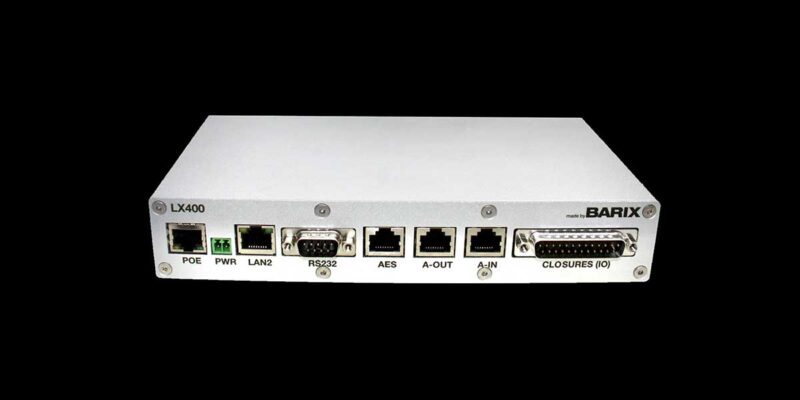Barix Brings Linux Open Source Programmability to New Barionet I/O Device
 At ISE 2017, Barix will introduce the Barionet 1000, the latest member of the company’s universal programmable I/O device family for IP-based control and automation applications. In contrast to other Barionet devices that use the proprietary Barix ABCL programming language, the Barionet 1000 is the first device to be programmable in Linux using the Open WRT framework. It is also the first Barionet device to integrate wireless support and a USB port for emerging control and automation connectivity needs.
At ISE 2017, Barix will introduce the Barionet 1000, the latest member of the company’s universal programmable I/O device family for IP-based control and automation applications. In contrast to other Barionet devices that use the proprietary Barix ABCL programming language, the Barionet 1000 is the first device to be programmable in Linux using the Open WRT framework. It is also the first Barionet device to integrate wireless support and a USB port for emerging control and automation connectivity needs.
The Barionet 1000’s positioning as a Linux Open WRT platform device addresses the latest industry trend for open source control, and provides systems integrators and OEMs with a clean slate to program the device for almost any control or automation application desired. To maximize the Barionet 1000’s programmable useful features and operational flexibility, Barix has equipped this device with wireless connectivity and a USB interface alongside standard Barionet features, including relay closures and digital and analog I/Os.
As part of Barix’s respected Barionet family, the Barionet 1000 is designed for a range of control and automation-based programmable functions. These include:
- access and door control
- contact closure monitoring, environmental monitoring, alarming, and logging
- failover switching
- motion detection and security camera control
- photovoltaic power management
- temperature monitoring, logging and HVAC control
Physically, the Barionet 1000 has two USB host ports, one 10/100 Ethernet port and one DB9 RS232 serial port; it also has Wi-Fi 802.11 b/g/n 2.4Ghz wireless connectivity and is IPv6 capable. Requiring a 9-30 VDC power supply, this device is built into a classic Barionet Din-Rail case with two relay outputs, four open collector (digital) outputs, and has eight contact closure inputs; four of which are analog capable. The Barionet 1000 also comes with 16M flash and 64M DRAM, and an interface for a Dallas 1-wire 18DS20 temperature sensors, which further simplify wiring needs by eliminating home runs.





